The transmission serves as the critical link between your engine’s power and the wheels that move your vehicle forward. It’s arguably one of the most complex and essential components in any automobile, responsible for converting the engine’s rotational force into usable power while providing the appropriate gear ratios for different driving conditions.
When a transmission works flawlessly, drivers barely notice its presence; shifts are smooth, power delivery is seamless, and the driving experience feels refined and controlled. However, when transmissions fail or develop issues, the results can be frustrating, expensive, and potentially dangerous.
Over the decades, certain manufacturers have developed reputations for building bulletproof transmissions that can withstand hundreds of thousands of miles with minimal maintenance, while others have struggled with designs that seem prone to premature failure, harsh shifting, and costly repairs.
Understanding which vehicles fall into each category can save prospective car buyers thousands of dollars in repair costs and countless hours of frustration. This comprehensive guide examines ten vehicles that represent the extremes of transmission reliability and performance.
We’ll explore five cars renowned for their virtually indestructible transmissions that maintain smooth operation throughout their lifespan, followed by five vehicles that have gained notoriety for transmission problems that plague owners from relatively early in their ownership experience.
Cars With Transmissions That Never Slip
These exceptionally engineered drivetrains feature precision-manufactured clutch packs and valve bodies that maintain consistent hydraulic pressure and seamless power transfer through hundreds of thousands of miles.
Their advanced torque converter designs and adaptive shift programming eliminate the harsh engagement patterns that plague lesser transmissions, delivering butter-smooth acceleration in all driving conditions.
From stop-and-go city traffic to highway merging scenarios, these remarkable transmissions maintain their factory-fresh shift quality without developing the internal wear that typically causes slipping or hesitation.
Owners consistently report decades of trouble-free operation with these dependable powertrains a critical reliability factor that preserves both driving enjoyment and long-term vehicle value throughout ownership.
1. Toyota Camry (2012-2017 with 6-Speed Automatic)
The Toyota Camry’s reputation for reliability extends well beyond its engine to include one of the most dependable transmissions ever produced by the Japanese automaker.
The 6-speed automatic transmission found in 2012-2017 Camry models represents the pinnacle of Toyota’s transmission engineering, combining smooth operation with exceptional longevity that has made these vehicles favorites among both consumers and fleet operators worldwide.
Toyota’s approach to transmission design prioritizes long-term reliability over sporty performance characteristics, resulting in a unit that may not provide the quickest shifts or most engaging driving experience, but compensates with virtually bulletproof construction and maintenance requirements that are remarkably minimal.
The transmission control module in these Camrys uses conservative shift mapping that prioritizes component longevity, often holding gears longer than more aggressive transmissions to reduce wear on clutch packs and bands.
The internal components of this transmission feature robust construction with oversized clutch packs, reinforced valve bodies, and cooling systems that effectively manage operating temperatures even under demanding conditions.
Toyota’s quality control processes ensure that each transmission meets strict tolerances, with computer-controlled testing procedures that verify smooth operation across all gear ranges before vehicles leave the factory.
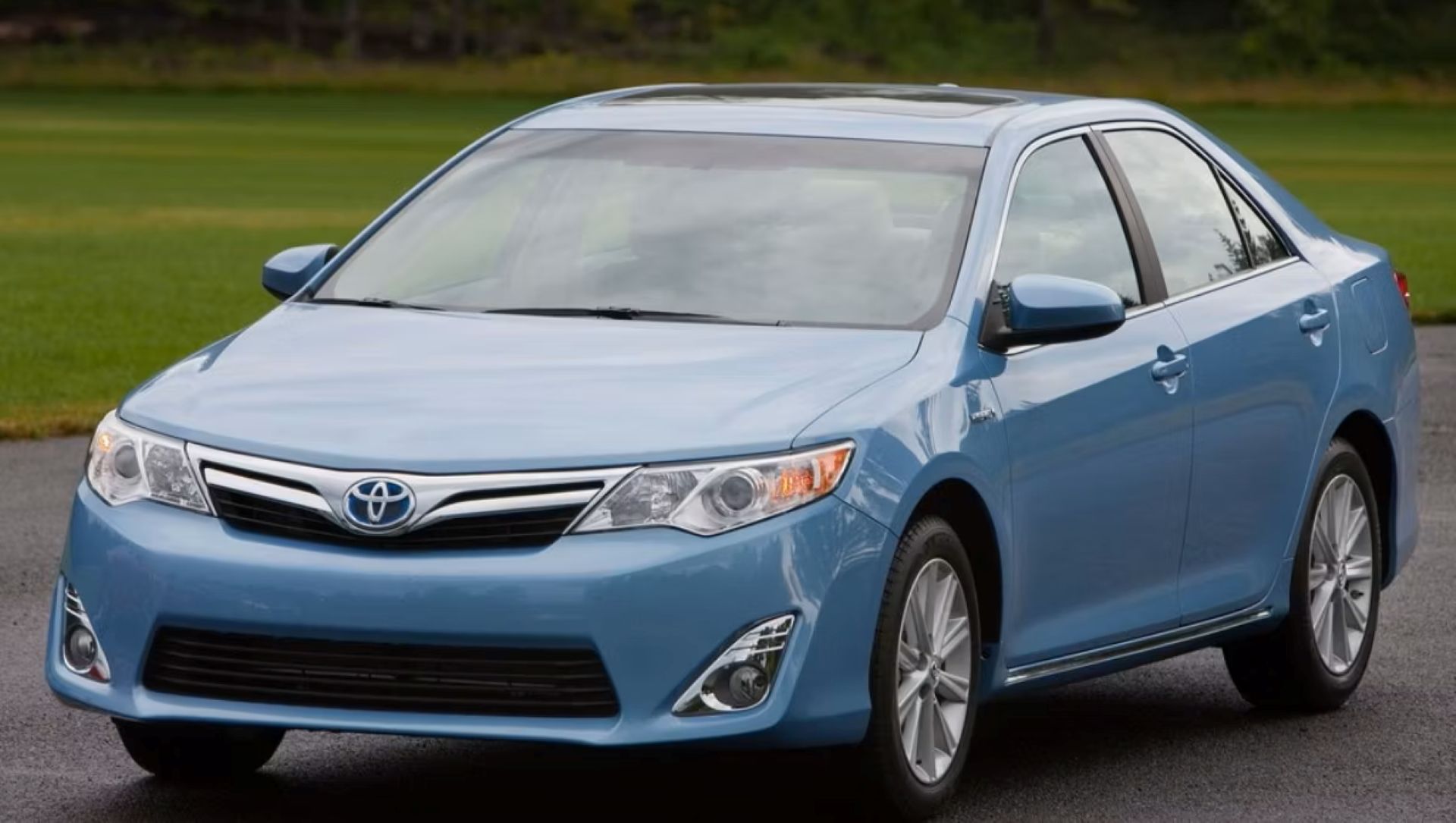
Maintenance requirements for this transmission are straightforward and inexpensive, typically requiring only periodic fluid changes every 60,000 to 100,000 miles, depending on driving conditions.
The transmission fluid itself is engineered specifically for Toyota’s requirements, providing excellent lubrication properties and thermal stability that help maintain consistent shift quality throughout the transmission’s lifespan.
Real-world reliability data supports Toyota’s reputation, with numerous examples of these transmissions operating smoothly well beyond 300,000 miles with only basic maintenance.
Fleet operators, taxi companies, and rideshare drivers frequently choose Camrys specifically because of transmission reliability, knowing that unexpected failures are extremely rare and that properly maintained units can provide decades of trouble-free service.
The shift quality remains remarkably consistent throughout the transmission’s lifespan, with most owners reporting that their transmissions shift as smoothly at 200,000 miles as they did when new.
This consistency stems from Toyota’s conservative engineering approach and the use of high-quality materials that resist wear and degradation over time.
2. Honda Accord (2013-2017 CVT)
Honda’s Continuously Variable Transmission technology in the 2013-2017 Accord represents a masterclass in CVT engineering, addressing many of the common complaints associated with this transmission type while delivering exceptional reliability and fuel efficiency.
Unlike traditional automatic transmissions that use fixed gear ratios, Honda’s CVT provides infinitely variable ratios that keep the engine operating in its most efficient range, resulting in impressive fuel economy without sacrificing reliability.
The engineering behind Honda’s CVT differs significantly from problematic CVT designs found in other manufacturers’ vehicles. Honda uses a robust steel belt system with enhanced tensioning mechanisms that reduce the likelihood of belt slippage or premature wear.
The transmission housing incorporates advanced cooling systems with dedicated coolers and circulation pumps that maintain optimal operating temperatures even during demanding driving conditions.
Honda’s approach to CVT programming emphasizes smoothness and reliability over sporty performance characteristics. The transmission control unit uses sophisticated algorithms that simulate traditional gear changes when drivers request more aggressive acceleration, providing a more familiar driving experience while maintaining the efficiency benefits of CVT technology.
This programming also includes protective measures that prevent the transmission from operating outside safe parameters, reducing the risk of damage during extreme driving conditions.

The reliability record of Honda’s CVT in these Accord models stands in stark contrast to CVT problems experienced by other manufacturers during the same period.
Honda’s extensive testing protocols and quality control measures ensure that each CVT meets strict durability standards before installation. The company’s commitment to continuous improvement is evident in the refinements made throughout the production run, with later model years incorporating lessons learned from earlier vehicles.
Maintenance requirements for Honda’s CVT are relatively simple, though the company recommends more frequent fluid changes than traditional automatics due to the different operating characteristics of CVT systems.
The specialized CVT fluid is formulated to provide optimal belt grip and cooling properties, and using the correct fluid specification is critical for maintaining long-term reliability.
Owner reports consistently praise the smoothness and quiet operation of Honda’s CVT, with many noting that the transmission becomes nearly invisible during normal driving.
The lack of traditional shift points creates a seamless power delivery that many drivers find preferable to conventional automatics, especially in stop-and-go traffic conditions where the CVT’s efficiency advantages are most apparent.
3. Lexus ES 350 (2007-2012)
The Lexus ES 350’s 6-speed automatic transmission exemplifies the luxury division’s commitment to refinement and reliability, combining Toyota’s proven mechanical engineering with additional enhancements designed to meet Lexus’s exacting standards for smoothness and durability.
This transmission represents one of the most reliable units ever installed in a luxury sedan, with a track record that has made these vehicles highly sought after in the used car market.
Lexus engineers enhanced Toyota’s already robust transmission design with additional refinements focused on eliminating any trace of harshness or hesitation during shifting.
The transmission control module uses more sophisticated programming than its Toyota counterparts, with adaptive learning capabilities that adjust shift points and pressures based on individual driving patterns.
This results in a transmission that becomes more refined over time rather than developing the rougher characteristics often associated with aging automatic transmissions.
The internal components receive premium treatments not found in standard Toyota applications, including upgraded friction materials, reinforced case construction, and enhanced filtration systems.
The valve body undergoes additional machining processes to ensure precise hydraulic control, while the torque converter features enhanced lockup characteristics that provide smooth engagement across a wider range of operating conditions.
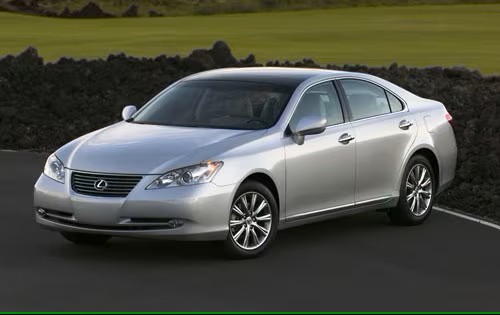
Lexus’s quality control processes exceed industry standards, with each transmission undergoing extensive testing procedures that verify smooth operation under various load and temperature conditions.
The company’s commitment to long-term reliability is evident in the conservative power ratings and safety margins built into every component, ensuring that the transmission can handle significantly more stress than it will encounter in normal operation.
The cooling system receives particular attention in the ES 350, with larger transmission coolers and enhanced circulation systems that maintain optimal fluid temperatures even during extended highway driving or stop-and-go traffic conditions.
This focus on thermal management contributes significantly to the transmission’s longevity, as excessive heat is one of the primary causes of automatic transmission failure.
Maintenance intervals for the ES 350’s transmission are generous, with Lexus recommending fluid changes every 60,000 miles under normal driving conditions.
The transmission fluid itself is a premium synthetic blend specifically for Lexus applications, providing superior lubrication and thermal stability compared to conventional automatic transmission fluids.
Real-world reliability data for these transmissions is exceptional, with numerous examples of ES 350s accumulating over 400,000 miles on original transmissions with only routine maintenance.
The consistent shift quality throughout the transmission’s lifespan has made these vehicles particularly popular among drivers who prioritize long-term reliability and smooth operation.
4. Mazda6 (2014-2018 with 6-Speed Automatic)
Mazda’s SKYACTIV-Drive 6-speed automatic transmission in the 2014-2018 Mazda6 represents a remarkable achievement in transmission engineering, combining the efficiency and reliability of a traditional torque converter automatic with response characteristics that rival dual-clutch systems.
This transmission demonstrates that conventional automatic transmissions can still compete with newer technologies when properly engineered and executed.
The key to SKYACTIV-Drive’s success lies in Mazda’s innovative approach to torque converter design and control. The system a multi-plate lock-up clutch that can engage at much lower speeds than traditional designs, providing direct mechanical connection between the engine and transmission in situations where most automatics would rely on fluid coupling.
This results in improved efficiency, reduced heat generation, and enhanced throttle response while maintaining the smoothness associated with torque converter automatics.
Mazda engineers focused extensively on reducing internal friction throughout the transmission, using advanced materials and precision manufacturing techniques to minimize energy losses.
The gear train features optimized tooth profiles and enhanced surface treatments that reduce friction and wear, while the hydraulic system uses variable displacement pumps that adjust pressure based on actual requirements rather than maintaining a constant high pressure.

The transmission control system incorporates sophisticated algorithms that predict driver intentions based on throttle input, vehicle speed, and other parameters.
This predictive capability allows the transmission to pre-select appropriate gears and prepare for shifts before they’re needed, resulting in response times that approach those of manual transmissions while maintaining automatic convenience.
Quality control during manufacturing involves extensive computer-controlled testing that verifies smooth operation across all gear combinations and load conditions.
Each transmission undergoes multiple test cycles that simulate years of normal driving, ensuring that quality issues are identified and corrected before vehicles reach customers.
The cooling system design prioritizes maintaining optimal fluid temperatures across a wide range of operating conditions, with dedicated coolers and circulation systems that prevent overheating even during spirited driving or towing applications.
This thermal management contributes significantly to long-term reliability and consistent shift quality. Maintenance requirements are reasonable and straightforward, with Mazda recommending fluid changes every 60,000 miles for normal driving conditions.
The transmission uses a specially formulated fluid that provides optimal friction characteristics and thermal stability, and proper fluid specification is critical for maintaining the transmission’s unique operating characteristics.
Owner feedback consistently highlights the transmission’s combination of smoothness and responsiveness, with many noting that it provides a more engaging driving experience than typical automatic transmissions while maintaining excellent reliability.
The transmission’s ability to hold gears during spirited driving while still providing smooth shifts during normal operation has made it particularly popular among driving enthusiasts who prefer automatic transmissions.
Also Read: 5 Cars With Great Warranty Support in the U.S. and 5 That Leave You on Your Own
5. Infiniti G37 (2008-2013 with 7-Speed Automatic)
The Infiniti G37’s 7-speed automatic transmission stands as one of the most sophisticated and reliable transmissions ever produced in a luxury sport sedan, combining advanced technology with robust construction that has proven capable of handling both daily driving duties and spirited performance applications.
This transmission represents the culmination of decades of development by Nissan’s engineering teams, incorporating lessons learned from both luxury and performance vehicle applications.
The transmission’s design philosophy emphasizes both performance and longevity, using advanced materials and construction techniques that provide exceptional durability while maintaining the quick, precise shifts expected in a luxury sport sedan.
The internal components feature reinforced construction with upgraded clutch packs, bands, and valve body components that can handle significantly more torque than the G37’s engine produces, providing substantial safety margins that contribute to long-term reliability.
Infiniti’s approach to transmission control programming sets this unit apart from more conservative designs, using aggressive shift mapping and adaptive learning capabilities that adjust operation based on driving patterns.
The transmission can recognize when the driver desires sporty performance and will hold gears longer, provide quicker shifts, and use different shift points to maximize engine performance. Conversely, during relaxed driving, the transmission prioritizes smoothness and fuel efficiency.
The hydraulic control system uses advanced solenoid designs and precise pressure regulation that enables incredibly smooth shifts under all operating conditions.
The transmission control module incorporates multiple sensors that monitor everything from throttle position and vehicle speed to transmission fluid temperature and individual gear engagement, allowing for precise control of shift timing and pressure.
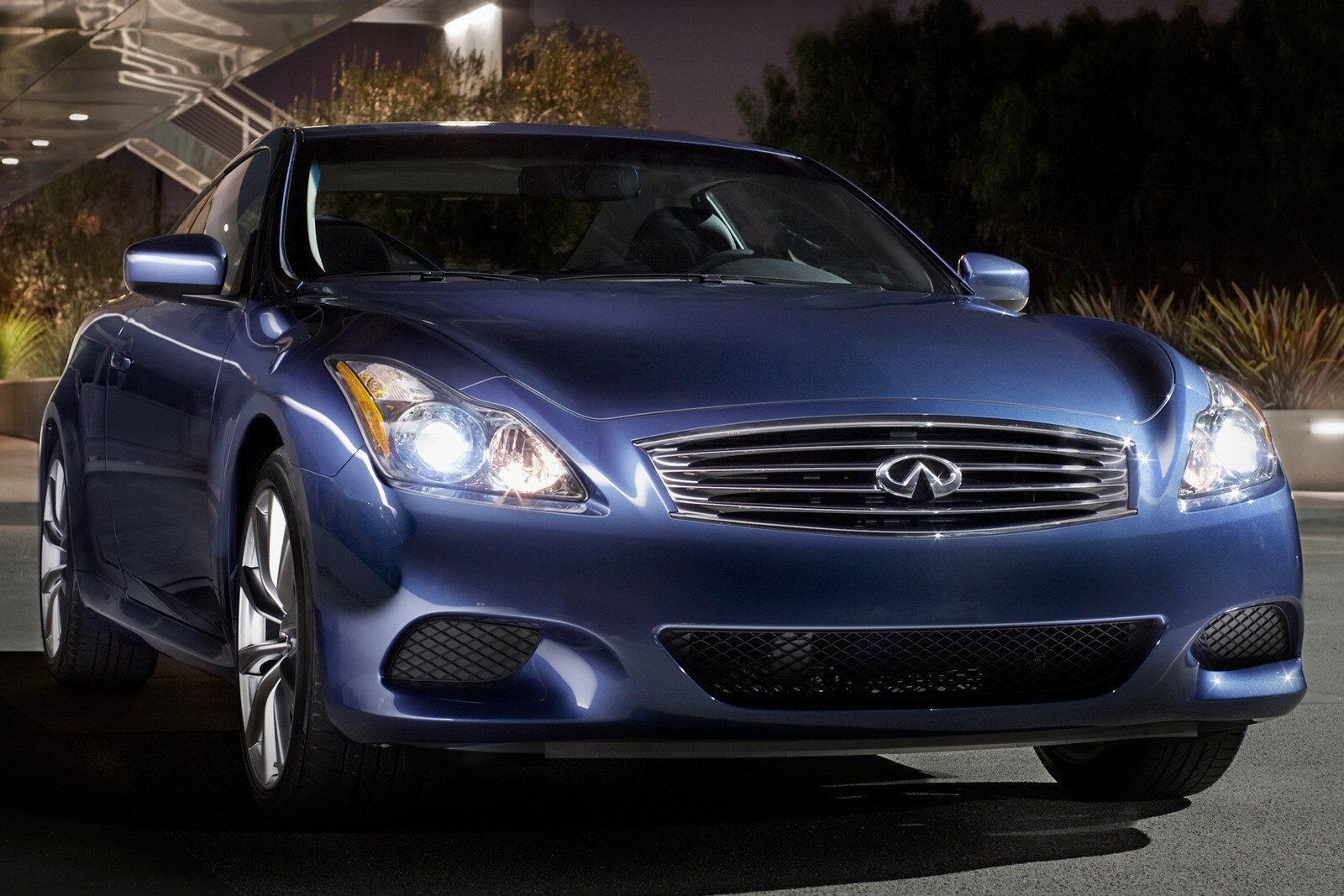
Thermal management receives particular attention in the G37’s transmission design, with enhanced cooling systems that include dedicated transmission coolers, improved fluid circulation, and heat exchangers that maintain optimal operating temperatures even during demanding driving conditions.
This focus on cooling prevents the heat-related damage that commonly affects high-performance transmissions. The torque converter features advanced lockup characteristics with a multi-plate clutch system that can provide partial engagement across a wide range of operating conditions.
This allows the transmission to eliminate torque converter slip in situations where traditional designs would rely on fluid coupling, improving efficiency and reducing heat generation.
Quality control during manufacturing involves extensive testing protocols that verify smooth operation under various load and temperature conditions.
Each transmission undergoes computer-controlled testing that simulates thousands of miles of driving across different scenarios, ensuring that any potential issues are identified and corrected before installation.
Maintenance requirements are straightforward but critical, with Infiniti recommending regular fluid changes using specially formulated transmission fluid that meets the system’s precise specifications.
The transmission’s sophisticated control systems are sensitive to fluid condition, making proper maintenance essential for optimal performance and longevity.
Real-world reliability data for the G37’s transmission is impressive, with numerous examples of vehicles accumulating over 200,000 miles on original transmissions while maintaining smooth, precise shifting characteristics.
The transmission’s ability to maintain performance capabilities throughout its lifespan has made these vehicles particularly popular in the used luxury car market.
Cars With Transmissions That Always Jerk
These problematic drivetrains suffer from fundamental design flaws including inadequate hydraulic pressure regulation and poorly calibrated shift programming that creates harsh, uncomfortable gear changes from day one.
Their substandard internal components and insufficient cooling systems accelerate wear patterns that manifest as increasingly violent shifts, transmission shudder, and delayed engagement under normal driving conditions.
From cold morning starts to routine acceleration scenarios, these notorious transmissions deliver jarring shift quality that worsens progressively, creating an unpleasant driving experience that degrades vehicle refinement.
Owners frequently report transmission replacements within warranty periods due to these inherent defects a costly reliability issue that significantly impacts both daily usability and long-term ownership satisfaction.
1. Nissan Altima (2013-2018 CVT)
The Nissan Altima’s CVT transmission from 2013-2018 represents one of the most problematic transmission implementations in modern automotive history, with widespread failures, premature wear, and driving characteristics that have frustrated owners and tarnished Nissan’s reputation for reliability.
These issues stem from fundamental design flaws, inadequate cooling, and cost-cutting measures that prioritized initial manufacturing costs over long-term durability.
The primary issues with Nissan’s CVT design center around the belt and pulley system that replaces traditional gears. Unlike Honda’s robust steel belt design, Nissan’s system uses a more cost-effective approach that proves inadequate for the stresses of normal driving.
The belt material degrades prematurely, leading to slippage, shuddering, and eventually complete failure. This degradation often begins within the first 60,000 miles, well before most owners would expect transmission problems.
The transmission control programming compounds these mechanical issues with erratic behavior that creates a jerky, unpredictable driving experience.
The CVT struggles to maintain consistent engine RPM during acceleration, creating a rubber band effect where engine speed climbs rapidly while vehicle acceleration lags. This disconnect between engine sound and vehicle movement creates an unnatural driving experience that many owners find disconcerting.

Cooling system inadequacies represent another fundamental flaw in Nissan’s CVT design. The transmission cooler proves insufficient for managing heat generated during normal operation, leading to elevated fluid temperatures that accelerate component wear and degradation.
Stop-and-go traffic, hills, and hot weather conditions can push fluid temperatures beyond safe operating ranges, causing immediate damage and long-term reliability issues.
The valve body and hydraulic control system exhibit inconsistent operation that manifests as hesitation, rough engagement, and unpredictable response to throttle inputs.
These issues often worsen over time as internal components wear and hydraulic pressures become inconsistent. Many owners report that their CVT develops increasingly harsh engagement and jerky operation as mileage accumulates.
Nissan’s response to widespread CVT failures has been mixed, with multiple warranty extensions and service campaigns addressing some issues while leaving many owners with expensive repair bills.
The company has acknowledged certain problems and extended warranty coverage for specific failure modes, but many owners experience issues that fall outside the covered categories.
The financial impact on owners has been substantial, with CVT replacement costs often exceeding $4,000 when failures occur outside warranty coverage.
Many owners discover that their vehicles have minimal resale value due to the transmission’s poor reputation, creating situations where repair costs exceed the vehicle’s worth.
Maintenance requirements for Nissan’s CVT are more demanding than traditional automatics, requiring more frequent fluid changes and specific fluid formulations.
However, even meticulous maintenance often fails to prevent the fundamental design issues that plague these transmissions, leaving owners frustrated with expensive upkeep that doesn’t guarantee reliability.
2. Ford Focus (2012-2016 PowerShift DCT)
Ford’s PowerShift dual-clutch transmission in the 2012-2016 Focus has become synonymous with transmission problems, generating thousands of complaints, multiple lawsuits, and a reputation that has severely damaged Ford’s credibility in the compact car segment.
The PowerShift system’s fundamental design flaws and inadequate development have created one of the most problematic transmission implementations in recent automotive history.
The dual-clutch design itself is not inherently flawed, as evidenced by successful implementations from manufacturers like Volkswagen and Porsche. However, Ford’s execution of this technology proved catastrophically inadequate for mass-market applications.
The system uses two separate clutches to pre-select gears, theoretically providing quick shifts without interrupting power delivery. In practice, Ford’s implementation creates jerky, hesitant operation that worsens significantly over time.
Clutch degradation represents the most common and serious issue affecting PowerShift transmissions. The dry clutch design proves inadequate for the start-stop driving conditions typical of compact car usage, leading to premature wear, slippage, and eventually complete failure.
Unlike wet clutch systems that use transmission fluid for cooling and lubrication, Ford’s dry clutch approach generates excessive heat and wear during normal operation.
The transmission control module’s programming creates additional problems through inconsistent shift logic and poor calibration. The system frequently exhibits hesitation during acceleration, particularly from stops, creating dangerous situations when drivers expect immediate response. The transmission often hunts between gears during steady-state driving, creating a jerky, unrefined experience that degrades over time.
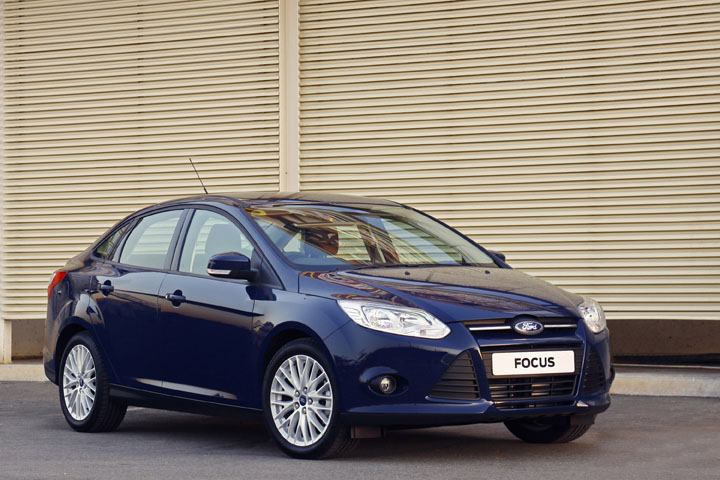
Temperature management issues plague the PowerShift system, with inadequate cooling leading to overheating during normal driving conditions.
Hot weather, stop-and-go traffic, and even moderate hills can push system temperatures beyond safe operating ranges, accelerating clutch wear and creating immediate drivability problems. Many owners report that transmission problems worsen significantly during summer months or in warmer climates.
The learning algorithms intended to adapt to driving patterns often make problems worse rather than better, with the system developing increasingly erratic behavior as it attempts to compensate for mechanical wear.
This creates situations where transmissions that initially exhibit minor issues develop severe problems as the control system makes inappropriate adjustments.
Ford’s response to PowerShift problems has included multiple service campaigns, software updates, and extended warranty coverage, but these measures have proven inadequate to address fundamental design flaws.
Many owners have experienced multiple repairs under warranty, only to have problems recur as soon as coverage expires. The financial impact extends beyond repair costs to include significant depreciation, as used car buyers actively avoid Focus models with PowerShift transmissions.
Many owners find themselves unable to sell or trade their vehicles without accepting substantial losses, while others face repair bills that exceed their car’s value.
Legal action against Ford has resulted in settlements and extended warranty coverage for some owners, but many continue to experience problems that fall outside covered categories.
The ongoing nature of these issues has created a situation where even repaired transmissions often develop new problems shortly after service.
3. Jeep Compass (2007-2017 CVT)
The Jeep Compass CVT transmission represents a particularly frustrating example of how cost-cutting and inadequate engineering can create long-term reliability nightmares for owners.
This transmission combines the inherent challenges of CVT technology with poor implementation, inadequate cooling, and control programming that creates a jerky, unpredictable driving experience that worsens significantly over time.
Jeep’s decision to use CVT technology in the Compass was driven primarily by fuel economy requirements rather than suitability for the vehicle’s intended use.
The CVT struggles with the weight and aerodynamic characteristics of the Compass, leading to excessive heat generation and premature component wear.
The system operates at or near its design limits during normal driving, leaving no safety margin for challenging conditions or component degradation.
Belt slippage issues plague these transmissions from relatively low mileage, creating shuddering, hesitation, and power loss that makes the vehicles difficult and dangerous to drive.
The belt material proves inadequate for the stresses of SUV operation, particularly when climbing hills, merging onto highways, or carrying loads. Many owners report that belt slippage becomes noticeable within the first 50,000 miles and worsens rapidly thereafter.
The transmission control programming exhibits poor calibration that creates jerky, unnatural operation even when the mechanical components are functioning properly.
The system struggles to maintain appropriate engine RPM during acceleration, creating the characteristic CVT rubber band effect where engine speed climbs while vehicle acceleration lags. This disconnect becomes more pronounced as mechanical components wear, creating increasingly frustrating driving experiences.
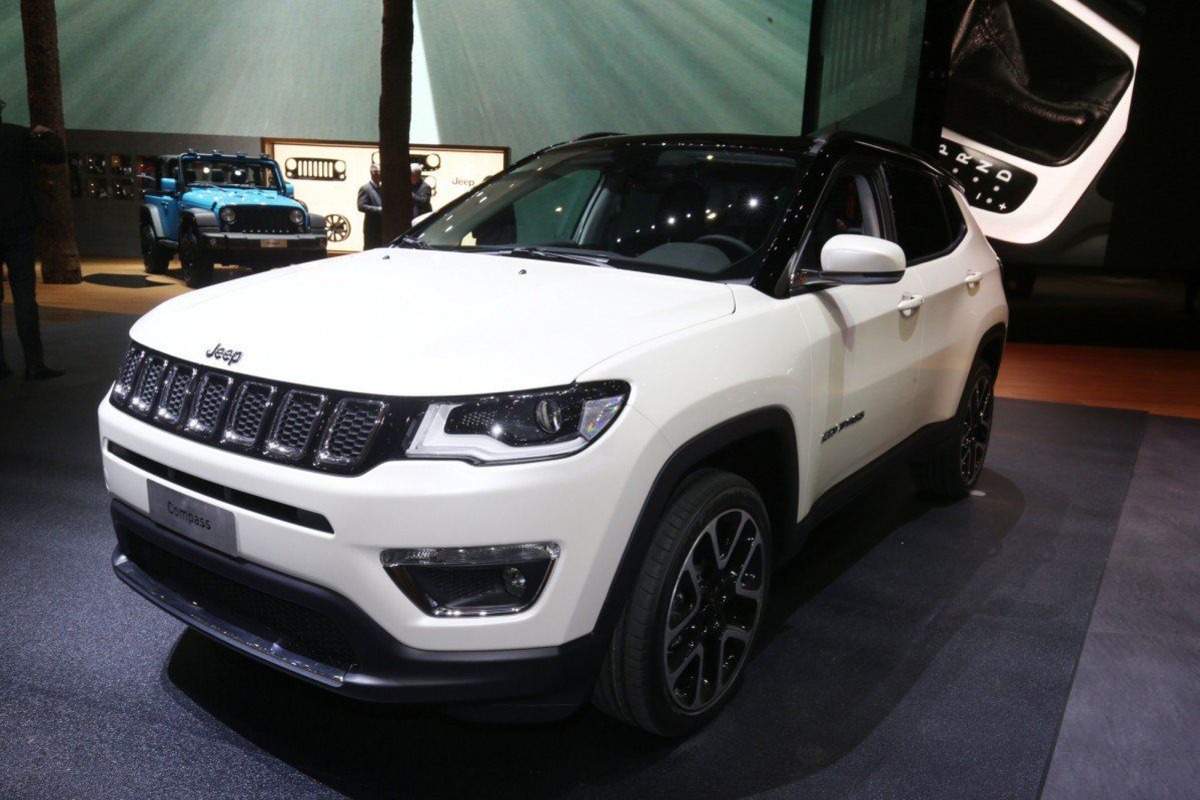
Cooling system inadequacies represent a fundamental design flaw that accelerates all other transmission problems. The CVT cooler proves insufficient for managing heat generated during normal operation, leading to elevated fluid temperatures that damage belts, pulleys, and control components.
Hot weather, stop-and-go traffic, and even moderate grades can push temperatures beyond safe limits, causing immediate damage and long-term reliability issues.
The hydraulic control system develops inconsistent operation as components wear and tolerances change. This manifests as delayed engagement, harsh shifts between drive and reverse, and unpredictable response to throttle inputs.
Many owners report that their transmission develops increasingly erratic behavior as mileage accumulates, with problems that are difficult to diagnose and expensive to repair.
Maintenance requirements for the Compass CVT are more demanding than traditional automatics, requiring frequent fluid changes and specific fluid formulations.
However, even meticulous maintenance often fails to prevent the fundamental design issues that plague these transmissions. Many owners discover that expensive maintenance provides little improvement in reliability or driving quality.
The resale impact has been severe, with Compass models equipped with CVT transmissions experiencing significant depreciation due to their poor reliability reputation.
Many potential buyers actively avoid these vehicles, creating situations where owners face substantial losses when attempting to sell or trade their vehicles.
Warranty coverage has been inconsistent, with some owners receiving repairs or replacements under extended warranty programs while others face expensive out-of-pocket costs for similar failures.
The ongoing nature of these problems means that even repaired transmissions often develop new issues, creating cycles of repeated repairs that frustrate owners and dealers alike.
4. Mitsubishi Outlander (2014-2020 CVT)
The Mitsubishi Outlander’s CVT transmission demonstrates how inadequate engineering and quality control can create persistent reliability problems that plague owners throughout their ownership experience.
This transmission combines poor mechanical design with inadequate cooling and control programming that creates jerky, unpredictable operation that worsens significantly over time, particularly in the demanding conditions typical of SUV operation.
Mitsubishi’s CVT implementation suffers from fundamental design flaws that make it unsuitable for the weight and performance requirements of the Outlander.
The belt and pulley system operates at or near its design limits during normal driving, leaving no safety margin for challenging conditions such as trailer towing, hill climbing, or heavy loading.
This results in premature component wear and frequent failures that often occur well before owners would expect transmission problems. The most common issues involve belt degradation and slippage, which manifest as shuddering during acceleration, power loss during highway merging, and eventually complete transmission failure.
The belt material proves inadequate for SUV applications, with many owners reporting noticeable deterioration within 40,000-60,000 miles. This degradation accelerates rapidly once it begins, often leading to complete failure within a few thousand miles of the first symptoms.
Overheating represents another critical flaw in the Outlander’s CVT design, with cooling systems that prove inadequate for the heat generated during normal operation.
The transmission cooler is undersized for SUV applications, and the fluid circulation system cannot maintain safe operating temperatures during demanding conditions. Stop-and-go traffic, hills, hot weather, and any form of towing can push fluid temperatures to levels that cause immediate damage.

The transmission control programming exhibits poor calibration that creates unnatural driving characteristics even when mechanical components are functioning properly.
The system struggles to provide smooth power delivery during acceleration, creating jerky, hesitant operation that many owners find unacceptable.
The programming also fails to provide adequate protection against overheating and component damage, allowing the transmission to operate in conditions that cause rapid deterioration.
Hydraulic control system problems develop as the transmission ages, manifesting as delayed engagement, harsh shifting between drive and reverse, and unpredictable response to driver inputs.
These issues often begin subtly but worsen rapidly as internal wear progresses and hydraulic pressures become inconsistent. Many owners report that their transmission develops increasingly erratic behavior that makes the vehicle difficult and unpleasant to drive.
The quality control issues extend beyond design flaws to include manufacturing inconsistencies that create reliability problems even in relatively new vehicles.
Some Outlanders exhibit transmission problems within the first few thousand miles, while others may operate acceptably until higher mileages when design limitations become apparent. This inconsistency makes it difficult for owners to predict when problems will develop.
Maintenance requirements are demanding and expensive, requiring frequent fluid changes with specially formulated CVT fluid that costs significantly more than conventional automatic transmission fluid.
However, even meticulous maintenance often fails to prevent the fundamental design issues that plague these transmissions, leaving owners frustrated with expensive upkeep that provides little improvement in reliability.
The financial impact on owners extends beyond repair costs to include severe depreciation, as used car buyers actively avoid Outlanders with CVT transmissions.
Many owners discover that their vehicles have minimal trade-in value due to the transmission’s poor reputation, creating situations where repair costs approach or exceed the vehicle’s worth.
5. Subaru Outback (2010-2014 CVT)
The Subaru Outback’s early CVT implementation represents a cautionary tale of how rushing new technology to market without adequate development can create long-term reliability nightmares for both owners and manufacturers.
These transmissions exhibit a range of problems, including premature failure, jerky operation, and expensive maintenance requirements that have tarnished Subaru’s reputation for reliability in this model generation.
Subaru’s decision to implement CVT technology was driven by fuel economy and emissions requirements, but the early execution proved inadequate for the demanding conditions typical of Outback usage.
The transmission struggles with the vehicle’s all-wheel-drive system, higher ground clearance, and the off-road capabilities that Outback owners expect. These factors create operating conditions that exceed the CVT’s design parameters, leading to accelerated wear and frequent failures.
Chain stretch and degradation represent the most common mechanical failures in these CVTs, typically manifesting as shuddering during acceleration, slipping under load, and eventually complete power loss.
The chain design proves inadequate for the torque requirements and duty cycles of all-wheel-drive SUV operation, with many owners experiencing failures between 80,000-120,000 miles. This timing often coincides with warranty expiration, leaving owners facing expensive repairs.
The transmission control programming exhibits poor calibration that creates unnatural driving characteristics throughout the vehicle’s lifespan. The system struggles to provide smooth power delivery during acceleration, particularly when climbing hills or merging onto highways.
The characteristic CVT rubber band effect becomes pronounced during demanding acceleration, creating a disconnect between engine sound and vehicle movement that many drivers find disconcerting.
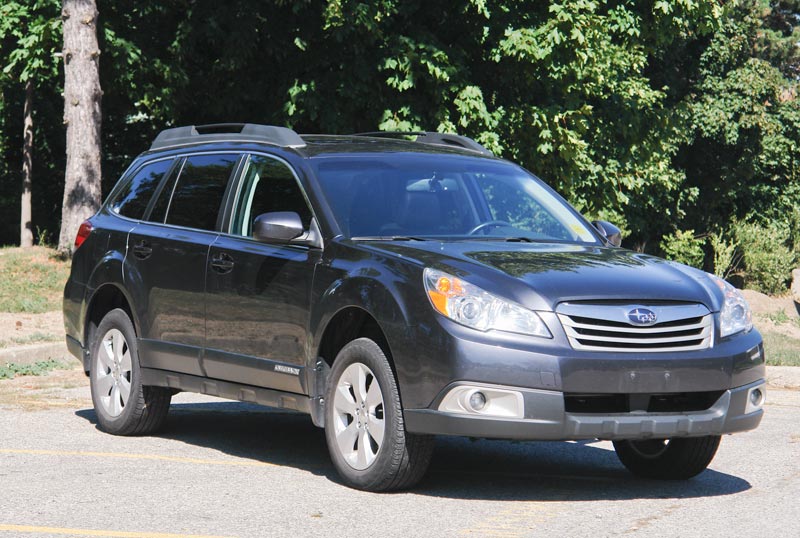
Overheating issues plague these transmissions, particularly during the summer months or when operating in mountainous terrain. The cooling system proves inadequate for managing heat generated by the CVT combined with Subaru’s all-wheel-drive system, leading to elevated fluid temperatures that accelerate component wear.
Many owners report that transmission problems worsen significantly during hot weather or when the vehicle is operated at higher elevations. The hydraulic control system develops inconsistent operation as the transmission ages, creating delayed engagement, harsh operation, and unpredictable response to throttle inputs.
These issues often begin as minor annoyances but worsen progressively as internal wear accumulates and system tolerances change. The control programming includes learning algorithms that attempt to compensate for mechanical wear, but these often make problems worse rather than better.
Quality control issues during the early production years created additional reliability problems, with some vehicles exhibiting transmission failures within the first 30,000 miles.
Subaru issued multiple technical service bulletins and extended warranty coverage for certain failure modes, but many owners experienced problems that fell outside covered categories or occurred after warranty expiration.
The maintenance requirements for these CVTs are more demanding and expensive than traditional automatics, requiring frequent fluid changes with specially formulated CVT fluid that costs significantly more than conventional transmission fluid.
The transmission is also sensitive to fluid condition, with degraded fluid causing immediate drivability problems and accelerated component wear.
Resale values have suffered significantly due to the transmission’s poor reliability reputation, with many potential buyers actively avoiding this model generation.
This creates situations where owners face substantial losses when attempting to sell or trade their vehicles, while repair costs often approach or exceed the vehicle’s remaining value.
Subaru’s response included extended warranty coverage and improved designs in later model years, but owners of affected vehicles continue to experience problems.
The ongoing nature of these issues means that even repaired transmissions often develop new problems, creating cycles of repeated repairs that frustrate owners and strain dealer relationships.
Also Read: 5 Engines That Never Burn Coolant and 5 That Always Need Top-Ups

